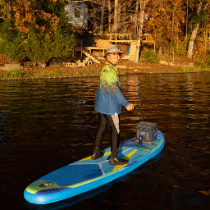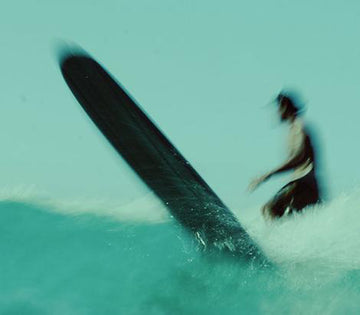What is the difference between a surfboard and a paddle board
In the warm coastal tourist resorts of the world, the popular trend of SUP is unstoppable, and because it is sought after by many professional surfers, celebrities and celebrities, SUP sports can be seen in safe waters all over the world.
When it comes to surfing, many people's first feeling is that it is exciting and fun, and it looks too professional, requiring superb skills to ride the waves! In contrast, SUP paddle board is not only fun, but also easier to get started. Unlike surfboards for professional surfing, paddleboards are wider and thicker, making it easier to master the balance. The operator also has an extra paddle in his hand, which effectively avoids the two most difficult surfing techniques of water skiing with arms and standing up. Even "novice" players can quickly get started.
For those who are passionate about the ocean, standing on a surfboard or stand-up paddle board is the closest place to the beauty of the ocean. But which of these two sports is more entertaining and gives you the most experience in the water? Most importantly, which one is best for you? Paddle board is a kind of surfboard, but it is obviously different from ordinary surfboard. The following are the main similarities and differences between surfing and stand-up paddle boards:
1.Different forces:
SUP paddleboards and surfboards can surf, but the most obvious difference between the two is that stand-up paddleboards or SUP use paddles to move, while surfboards use the surfer’s body and hands as paddles. Oars, and then ride the waves or steer according to the deviation of the center of gravity.
2.Different shapes:
Generally, paddleboards are longer and wider than surfboards. Surfboards are generally 8 feet, and paddleboards are generally 10-14 feet. It is obvious from the photos. Relatively speaking, surfboard photography is more popular. The reason for the difference is the use of surfboards. When the SUP board is sliding on the sea, it is usually for better stability in the water. Surfboard means riding with or along waves, requiring greater maneuverability and flexibility.
3.Different sizes:
stand-up paddle boards usually have a larger volume than surf boards. Larger volume usually means thicker (sometimes), longer (almost always) and wider (almost always). The advantage of having a larger volume is that it can be easier to catch the waves.
4.Different ways of using:
surfboards are generally sitting or lying down and waiting for the waves, then chasing the waves, and finally standing on the board. If the paddle board is well balanced, you can always stand on the board, or sit/kneel on the board, and use the paddle in your hand to paddle.
5.Different accessories:
a pad is generally attached to the surface of the paddle board to prevent slippage. In addition, the paddle board is also equipped with a paddle for rowing.










